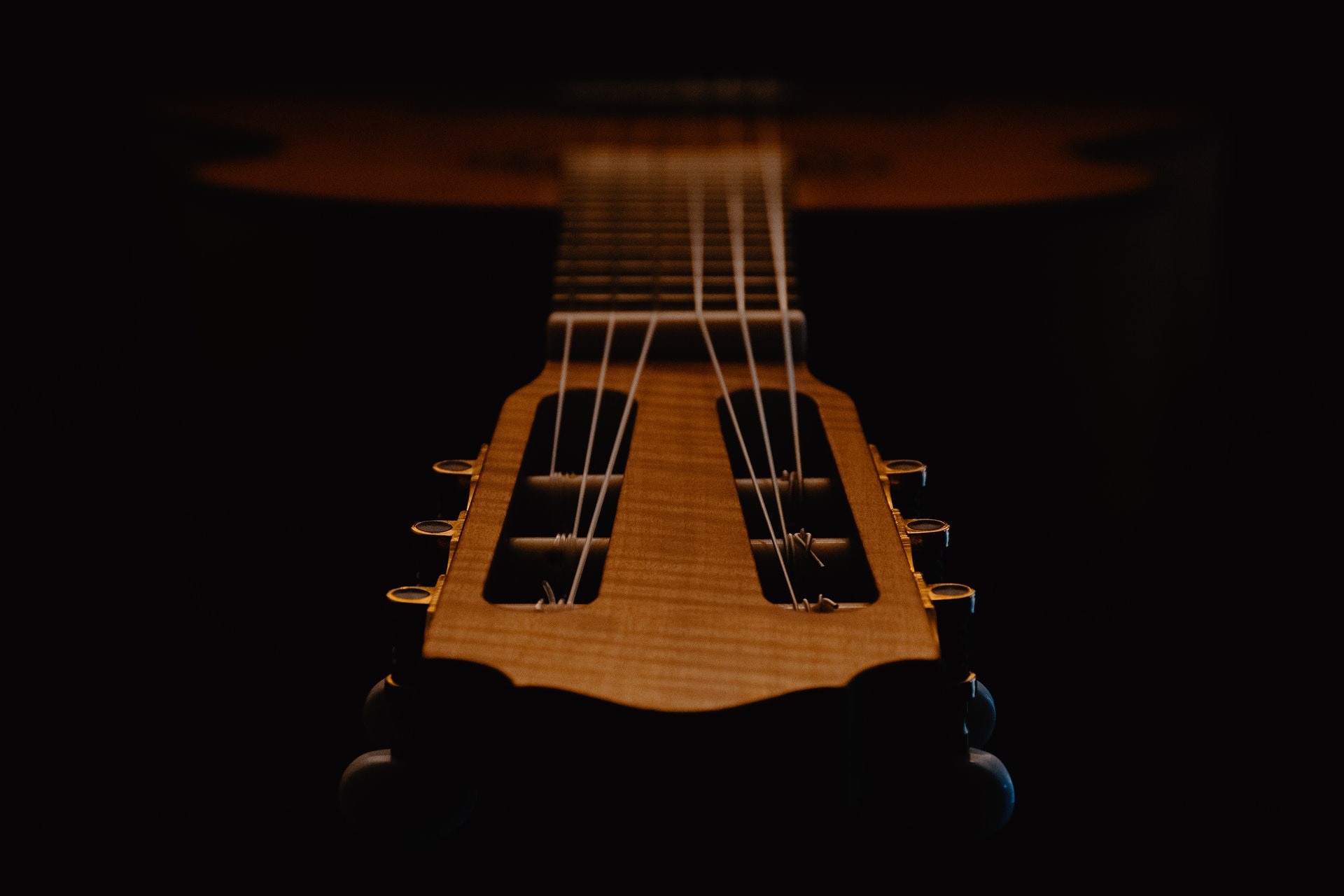How to Strum a Guitar
Strumming a guitar seems like a basic concept. Nevertheless, there’s more to it than meets the eye, which is probably why you Googled it. Fortunately, here you are.
So how do you strum a guitar, exactly? There are many methods to strumming a guitar, the most common of which is using a pick. However, some guitarists prefer to use their fingers and thumbs. Furthermore, there are technique variations beyond using (or not using) a pick.
Don’t worry. Strumming a guitar is only slightly more complex than it sounds. Let’s dive in and clear things up.
Easiest Way to Strum a Guitar
Even those with no guitar-playing experience understand the basic premise of strumming.
For example, friends and relatives may ask to play your guitar and awkwardly strum the open strings. They’ll then (hilariously) say something like, “I’m good, aren’t I?”
Of course, they’re not remotely good. Nevertheless, they probably knew to strum downward to get sound to come out.
The point? The easiest way to strum a guitar is to do whatever feels natural. For most beginning guitarists, lightly stroking in a downward pattern is the most comfortable way to strum.
This method works perfectly for basic chord progressions. However, there are a few simple steps to keep in mind:
- Use a metronome, backing track, or drummer (real or pre-recorded) to keep time. Time your strums to the beat.
- Practice downstrokes and upstrokes. In most cases, alternating stroke direction ensures a steady rhythm and allows you to play faster. Try saying down, up, down, up as you strum to get the hang of things.
- Accuracy beats speed. While it’s tempting to flex by playing quickly, this is only impressive if you’re hitting the right notes. Focus on playing slowly (60 beats per minute or less) and playing the right notes steadily. Once you’re comfortable with the tempo, increase it slightly – i.e., from 60 to 65 BPM.
- Check your form. You must keep your wrist loose to avoid strain. If you’re serious about guitar, you’ll often play nonstop for over half an hour. Tight wrists lead to pain that can cripple your ability to play the next day. So, take a deep breath and relax.
Using a Pick vs Using Your Fingersq2
Many guitarists use their fingers to strum. Others use picks. Which camp is correct?
There are valid reasons to use your fingers, and there are valid reasons to use a pick. Firstly, here are some common reasons for finger strumming:
- Playing a classical guitar. Classical guitars have synthetic gut strings (usually nylon) and are much “lighter” than steel strings. Thus, it’s easy to get sound out with a thumb or nail. Meanwhile, finger strumming produces the soft tones that many classical guitarists desire.
- Reducing volume. Finger strumming is quieter than prying a string with a pick. Thus, it is a helpful technique for apartment-dwellers or anyone who must avoid creating excess noise.
- Not having a pick nearby. While picks are cheap and plentiful, guitarists still manage to end up in situations without them. Finger strumming doesn’t require any extra equipment.
And here are the reasons most guitarists prefer picks:
- Picks are easier on the fingers. The fretting hand faces a lot of stress when swiftly switching chords. Picks allow beginner guitarists to have a functional hand after they brutalize the other during practice.
- Picks provide a sharper sound, giving volume and punch to each strum. It also allows an acoustic guitar to be heard from farther away.
- Picks allow for more precision. Lead guitarists, for example, usually use one string at a time. A pick is invaluable for isolating notes during a guitar solo. On the other hand, your fingers are thicker than picks (we hope) and make it hard to avoid hitting adjacent strings.
Strumming a Guitar for Different Genres
The genre you play affects many parts of guitar-playing. Some genres use full chords while others use two to three-stringed chord variants like power chords.
Additionally, some genres are downstroke heavy while others rely on the grooviness of upstrokes.
Here are some examples of those strumming variations:
Punk
The punk sound is largely recognizable from its reliance on only downstrokes. Look at this Sex Pistols concert and pay attention to the guitarist.
As the video represents, punk is all about the downstrokes. Downstrokes enable each chord to sound identical to the one before it as the order in which strings are struck doesn’t change. Furthermore, they enhance repetitive elements.
However, punk is also about speed. To strum a guitar for punk songs, you must be consistent, repetitive, and quick. Additionally, punk predominantly uses power chords – usually on the E, A, and D strings only.
Try resting your palm near the bridge of your guitar to avoid unwanted noise from higher strings. Then, develop your speed. Remember to start slow and only increase the tempo when you’re 100% accurate.
Reggae
Upstrokes help give reggae music its bounce. While not all reggae songs use upstrokes, many do. Thus, it’s important to get familiar with switching directions as you strum.
Unlike punk music, reggae moves slowly. To develop your technique for reggae, you’ll need to focus on rhythm. Fortunately, it’s easy to play reggae-style guitar once you get a hang of the strumming pattern.
The most common strumming pattern for reggae goes like this:
Downup-Pause-Downup-Pause-Downup.
Relaxation is key. Reggae is all about winding down, after all. Start with some easy guitar warmups to get your blood flowing.
Jazz
Jazz is a bit more complicated than punk and reggae. In its extensive history, jazz guitarists have tried just about everything. Consequently, strumming patterns vary.
For jazz, it’s best to familiarize yourself with all picking and strumming variations. Additionally, you’ll need to get comfortable with complicated chords and arpeggios. Precision is the queen of jazz musicianship.
In short, the answer to “what strumming techniques are used in jazz?” is yes. All of them.
How to Strum a Guitar Without a Pick
There are times when finger strumming is superior to using a pick. Or maybe you find yourself without a pick when you’d very much like to have one.
Either way, knowing how to strum with your fingers is beneficial. There are three standard methods to finger strumming.
Let’s explore them.
Thumb Only
Using your thumb to strum provides a gentle tone. It’s the best method for strumming chords for those who’d like to sing or let their guitar accommodate rather than dominate a song.
Grace each string with your thumb as you move your arm down. Keep the meaty part of your thumb tilted toward your guitar to avoid hitting the strings with your nail on upstrokes.
The thumbs-only strumming technique is one of the easiest of them all. However, it’s not well-suited for playing individual strings or scales. Instead, you’ll need to use your other four fingers.
Fingers Only
You can strum chords or play scales with your fingers. To strum chords, extend your fingers so that your nails stroke each string on the downstroke. On upstrokes, return your fingers to their original position by running your flesh back along the strings.
Do not move your arm with this technique. Opening and closing your hand provides all the movement you need to strum.
Using all your fingers allows you to play individual notes. Practice by playing a scale and assigning one finger to each string.
Thumb and Fingers
For ultimate flexibility, use your thumb and fingers together. While it’s a bit trickier to get down pat, this hybrid technique allows you to alternate between flesh (thumb) and nail (finger) strumming for more control over your tone.
Guitarists often assign their thumb to the low-pitched E string for bass notes. Meanwhile, their fingers handle the A, D, G, B, and high E string.
To master strumming with your thumb and fingers, begin by practicing with only your thumb. Then, get comfortable using only your fingers. Combine them when you achieve confidence.
Electric vs Acoustic Guitars: Which is Easier to Strum?
Notable differences exist between acoustic and electric guitars when it comes to sound and feel. For example, it is well-established that electric guitars are easier to strum.
Firstly, the sound is amplified through electronic pickups. How forcefully you pick a string can affect tone but has little to do with volume. With an acoustic guitar, the only way to play louder is to strum harder.
Secondly, electric guitar strings are usually thinner. Less force is required to fret the strings. The lightest touch is all it takes to fill a room if you’re using an amp and speaker cabinet.
Does this mean you should start with an electric guitar? No, at least not because it’s easier. Once you build the hand strength to play an acoustic guitar, you’ll be blown away by how easy it is to strum chords on an electric guitar.
Meanwhile, going from electric to acoustic might be a blow to your confidence as you struggle to play the simplest chord.
Conclusion
Strumming a guitar is both an easy and tricky concept. The method is simple. You move your fingers or a pick along the strings.
However, execution isn’t so straightforward. There are considerations depending on the genre and type of guitar. You also need to develop muscle memory so that strumming becomes as easy as you thought it would be.
Fortunately, understanding the basic techniques and putting them into practice doesn’t take much time. Before you know it, your fingers will grow brains and strumming will become automatic.








